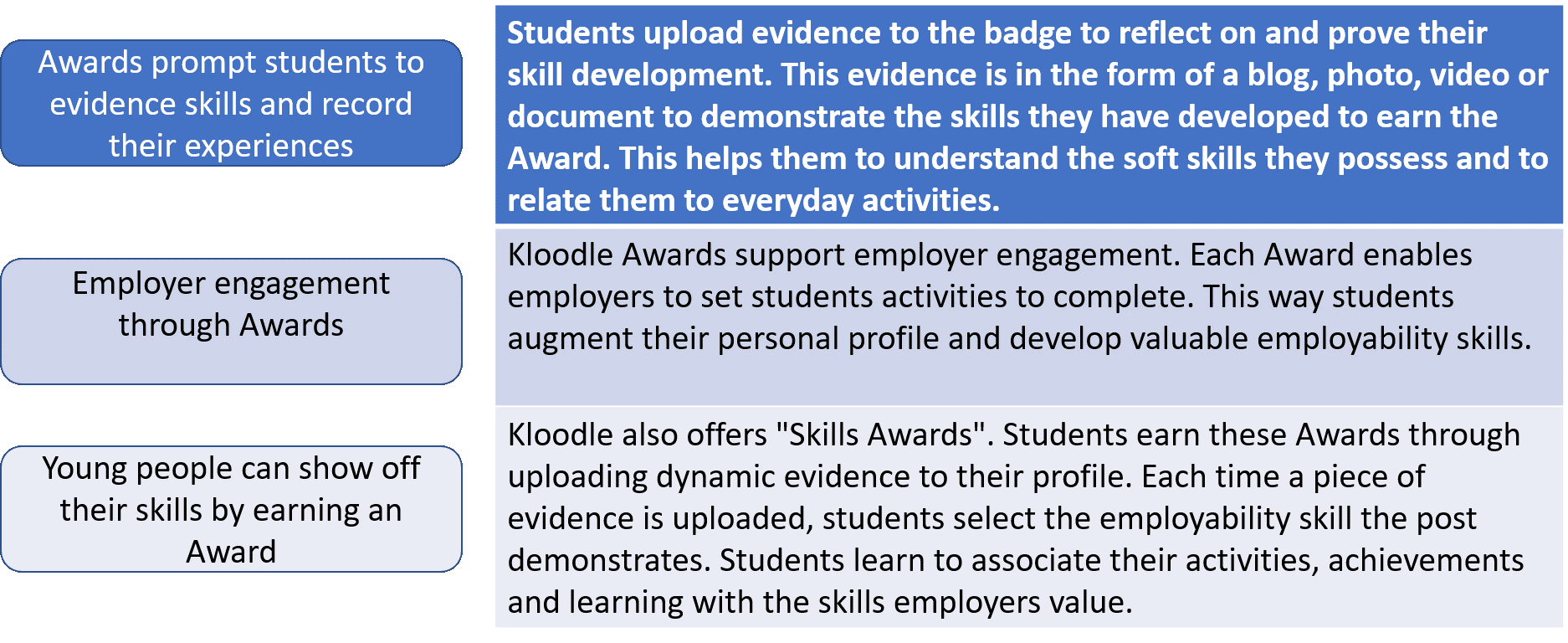Every young person can benefit from digital #mentoring, anytime, anywhere

This is the second of my articles on mentoring which followed the discussion I had during my lunch with my old friend, Andy.
In the first article, we looked at the definitions, history, theory and research.
In this follow-up article, I am going to look at how mentoring can be carried out on a digital platform.
Remote, online, virtual, digital, distance or even e-mentoring

The generation of young people who have grown up with use of digital media e.g. texting, email, Facebook, Twitter, Skype, Instagram and so on, are often described as ‘digital natives’ and communication by technology is engrained in lifestyles.
Use of social media has skyrocketed in recent years in ways that are dramatically shifting how and when young people interact with their friends and family members.
According to a survey by Business Insider, 99% of young people in the UK use social media on a regular basis and, as a result, organisations involved in dealing with young people must look for tech solutions.
With the dessert menu in hand, Andy put forward a number of queries about the term ‘digital’, as there can be quite a cross-generational misconception of what digital can mean.
He voiced concerns that some people worry that there is limited human input, that decisions are made by bots or that responses are determined by an algorithm. I assured him, not here it doesn’t.
In this context we are referring to the fact that the platform is digital; the technology is a conduit for the information and relationship and the mentors and mentees are real, thinking, moving human beings.
Andy’s a traditionalist. He was concerned that, as a more experienced person, he might not be able to operate the technology. I informed him you don’t have to be a tech whizz to use the technology, it’s just a tool through which the participants can communicate, just like texting, set tasks, respond and assess; except, conveniently, it’s all in one place and very intuitive. Andy pressed me to deliver the killer advantages of digital over physical.
I explained using digital media has a number of benefits over traditional face-to-face mentoring:
One key advantage is that it is easier and more convenient to co-ordinate meetings and set tasks as it allows mentors to be connected with mentees, wherever either party is located, saving loads of travel time and costs in the process;
It also preserves valuable class time which would have been compromised if the sessions had been scheduled in the school timetable.
The beauty is that all parties can respond when it’s convenient for them rather than wait until the scheduled time of the next meeting and decisions are in real-time.
Consequently, this method of mentoring is referred to as remote or distant or virtual.
| Social anxiety |

In our experience, having interacted with numerous colleges and schools across the UK, many students have fed back that they feel intimidated by interactions in person with ‘experts’ and burdened by telephone numbers and schedules; also, in groups, they don’t like to promote themselves by appearing to be overly ‘ambitious’ in front of their peers. Many young people would prefer to disclose and explore feelings and personal information under the cloak of anonymity, which social media allows, rather than the potential embarrassment of face-to-face. This is backed up by the 2008 study into Online Communication and Adolescent Relationships by Subrahmanyam and Greenfield, who concluded that young people find online relationships relieve social anxiety. |
Extending this, the system allows insight and produces analytics on the outcomes, potentially in real-time. Skills development can be customised and then monitored, in particular, before and after mentoring so that the impact can be assessed and recorded.
Overall, it’s more efficient, more flexible and suits the students. On top of this, both the mentors and the students learn some digital skills at the same time.
So, remote, online, virtual, distance or even… wait for it… digital mentoring, whatever you want to call it, this is what we have launched at Kloodle and it’s proving popular!
Remote Mentoring System
Bingo. He liked it. Just a few more questions now. As Andy grappled with his Knickerbocker Glory, I grappled with his questions, “What does all this mean for Kloodle? How does Kloodle do it?”
At Kloodle we have developed a remote mentoring system through our digital platform. Alongside this, we have built an App so that Kloodlers can operate the system on their phone anywhere.
One of the main advantages is that communication, the setting and completion of tasks can all be done in one virtual location, so you don’t have to switch between different systems, such as email, Skype etc.
The parties can liaise via the messaging system on Kloodle, which is just like sending texts; the messages are not encrypted so there’s complete transparency for teachers who have outright access to see the dialogue and content, to ensure safeguarding standards are met.
We wanted to develop the mentorship programme to reflect our philosophy, so instead of being dependent and focussed on the co-location of the mentor and mentee, the connection can be made irrespective of where they are based.
This is designed to promote social mobility; it means that an employee of an organisation in, say, London, in a City-centric career, could mentor students in, say, Hartlepool and Inverness at the same time, without having to travel there and back.
We have created the digital mentoring system so that expert mentors can be matched with students, but also with groups of mentees of between 2 up to 20.
Awards System
Our method of mentoring is effectively the GROW model (as described in the previous article), but using technology. The conduit for the mentoring relationship is our legendary Awards system.
The mentor is typically a person who has worked or is still working in a particular industry or career and will have been chosen as a mentor with a view to imparting or guiding the mentee on what skills may be required for a career in that field.
The way skills are assessed using Kloodle is through our tried and tested awards or badging system and young people are already comfortable with this kind of approach in the classroom.
A series of tasks are assigned to an award, designed to get students to think about a specific skill they’re developing through activities they undertake, be that enrichment, work experience or through curriculum.
The awards can be generic or tailor-made for each organisation. So, Andy told me that at his company resilience was viewed as a critical skill.
In this case a Resilience Award could require the student to demonstrate resilience, and so the mentor could set the award as a task for the student or group of students they are overseeing.
In practice, we run this over three stages;
- Firstly, the students are asked for their understanding of what the skill is; this gets the young people to reflect and think about soft skills and how they use them in everyday life. For example, ‘what is your understanding of resilience and provide some examples of how you use it.’
- In the second stage, the mentor sets a challenge for the student, typically how you might need or apply the skill, here resilience, in the workplace. This way the students can get a feel for how this applies in the work situation.
- In the third stage, the student can ask the mentor questions relating to the topic. The student will upload evidence to demonstrate resilience in their life. This task will be judged and if the criteria are fulfilled, the award will be granted. The evidence goes onto the mentee’s Kloodle profile and so this way the student can attain skills awards and demonstrate their employability skills.
The rationale of badging is illustrated through the chart below:

Analytics
There are a number of analytics produced which teachers and companies can view, with a dashboard displaying the key metrics for teachers and mentors.
This includes: Awards Reports, which include the hours recorded; Awards Activated, completed and not completed; the Scores of the posts and the Evidence itself.

Talent Pipeline
Some companies we work with extend the mentoring system to develop what’s called a Talent Pipeline. At the end of the mentoring programme, having awarded all of the skills’ badges, the mentor and the company may have found that a number of students have shown great potential to fit in with their ethos and they would like to maintain a continuing working relationship with them.
This may involve further interactions through badging to monitor progress with a view to offering work placements or internships down the line. With this as a potential end goal, companies and students take the exercise seriously.
As coffee arrived, I could tell he was interested in getting involved. “Alright then, give me some examples of how it is used in practice.”
I took a sip of my cappuccino and continued to give some real-life examples.
Neil Wolstenholme, Chairman, Kloodle
This is the second part of a 3 part mini-series. Article 1 is about the definitions, the tradition, the history, the research and the models – it’s the framework. Articles 2 and 3 are about digital mentoring and how we do it at Kloodle, with our latest venture with Salford Foundation.
Copyright © 2019 FE News











Responses